Removal Procedure
- Disconnect the negative battery cable.
- Apply the parking brake.
- Remove the console. Refer to Instrument Panel Compartment Replacement .
- Remove the IP accessory trim plate. Refer to Instrument Panel Accessory Trim Plate Replacement .
- Remove the driver knee bolster trim panel. Refer to Driver Knee Bolster Panel Replacement .
- Remove the ignition switch lock cylinder electrical connector from the retaining tab on the side of the ignition switch.
- Disconnect the lock cylinder electrical connector.
- Remove the ignition switch bezel.
- Remove the hazard warning switch wiring harness from the ignition switch retainer.
- Disconnect the ignition switch electrical connectors.
- Disconnect the park/lock cable (A/T) from the ignition switch.
- Remove the ignition switch retaining bolts.
- Remove the ignition switch.
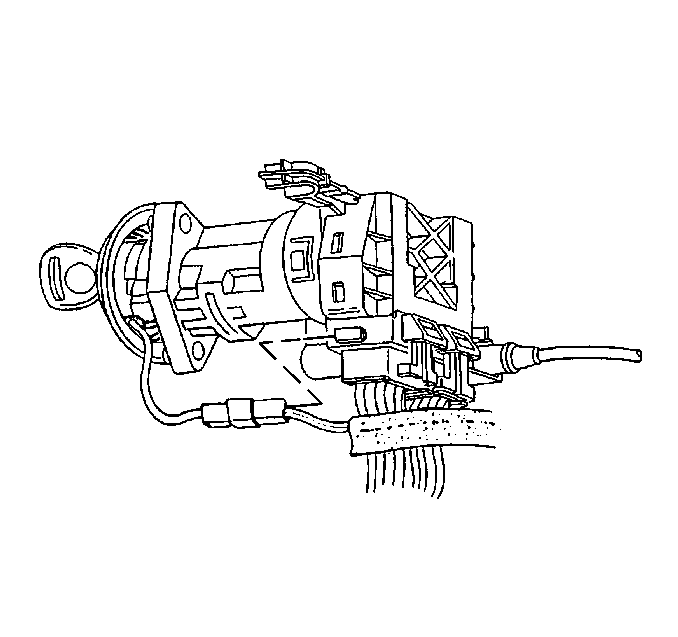
Caution: Unless directed otherwise, the ignition and start switch must be in the OFF or LOCK position, and all electrical loads must be OFF before servicing any electrical component. Disconnect the negative battery cable to prevent an electrical spark should a tool or equipment come in contact with an exposed electrical terminal. Failure to follow these precautions may result in personal injury and/or damage to the vehicle or its components.

Important: Take note of the way in which the ignition switch lock cylinder wire is wrapped around the base of the ignition switch bezel.
Carefully pull to unsnap.
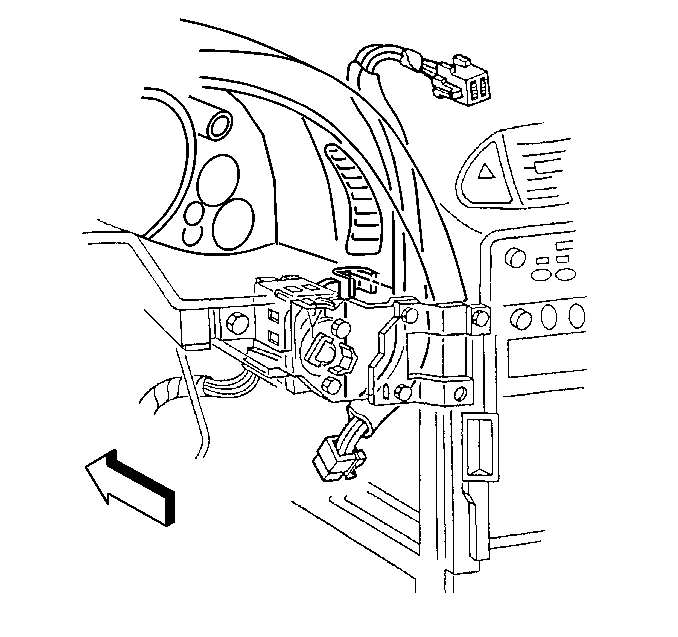
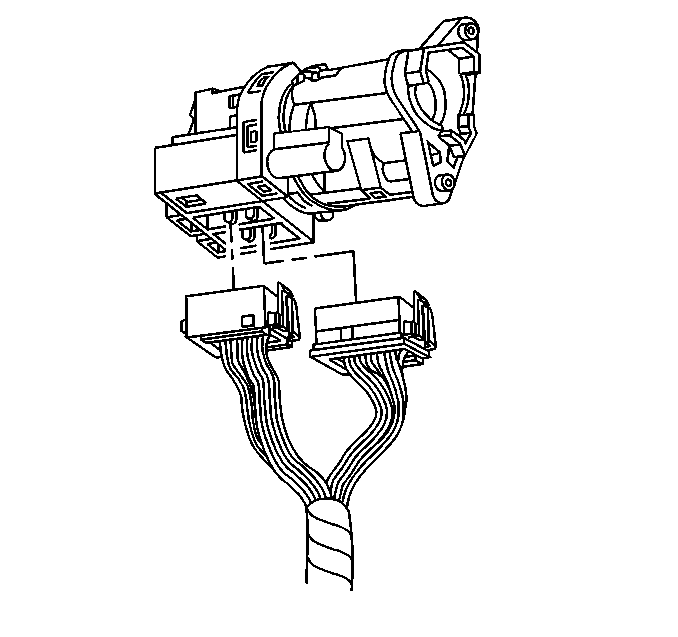
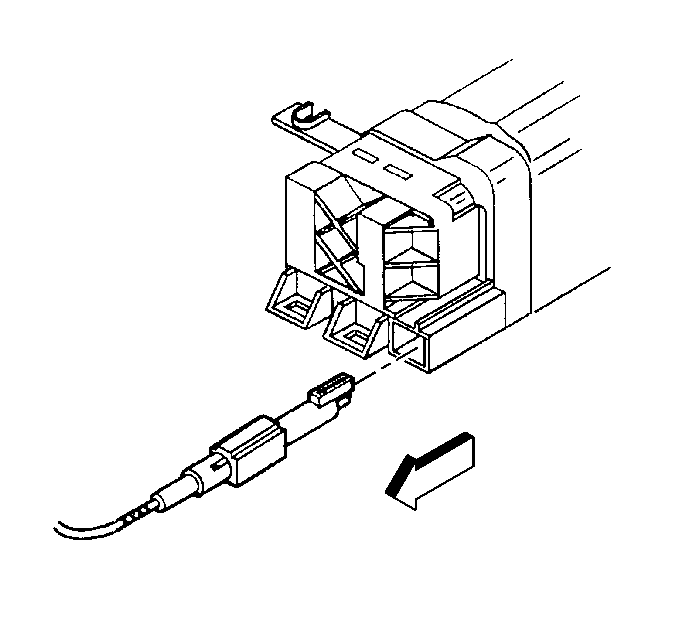
| 11.1. | Insert the key into the ignition switch, then turn the ignition to ON. |
| 11.2. | Using a flat bladed screwdriver or other suitable tool, depress the park/lock cable retaining tab (located on the underside of the switch near the base of the cable). |
| 11.3. | Pull to remove the cable. |
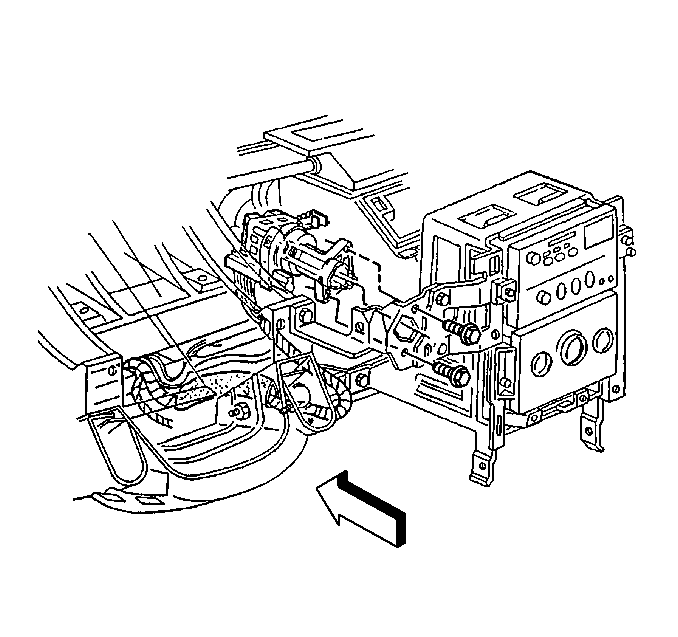
Installation Procedure
- Install the ignition switch into position on the ignition switch housing bracket.
- Install the ignition switch retaining bolts.
- Install the park/lock cable (A/T) to the ignition switch (still in the ON position).
- Connect the ignition switch electrical connections.
- Install the hazard warning switch wiring harness to the ignition switch retainer.
- Install the ignition switch bezel to the switch.
- Connect the lock cylinder electrical connector.
- Install the lock cylinder electrical connector to the retaining tab on the side of the ignition switch.
- Install the driver knee bolster trim panel. Refer to Driver Knee Bolster Panel Replacement .
- Install the IP accessory trim plate. Refer to Instrument Panel Accessory Trim Plate Replacement .
- Install the console. Refer to Instrument Panel Compartment Replacement .
- Connect the negative battery cable.
- Program the transmitters. Refer to Transmitter Programming in Keyless Entry.
- Release the parking brake.

Notice: Use the correct fastener in the correct location. Replacement fasteners must be the correct part number for that application. Fasteners requiring replacement or fasteners requiring the use of thread locking compound or sealant are identified in the service procedure. Do not use paints, lubricants, or corrosion inhibitors on fasteners or fastener joint surfaces unless specified. These coatings affect fastener torque and joint clamping force and may damage the fastener. Use the correct tightening sequence and specifications when installing fasteners in order to avoid damage to parts and systems.
Tighten
Tighten the ignition switch retaining bolts to 5.5 N·m
(49 lb in).

Push to secure the cable retaining tab.



| 6.1. | Wrap the ignition switch lock cylinder wire around the base of the ignition switch bezel, as noted during removal. |
| 6.2. | Align the bezel slots to the lock cylinder pins, then push to secure. |

Tighten
Tighten the negative battery cable bolt to 15 N·m (11 lb ft).
